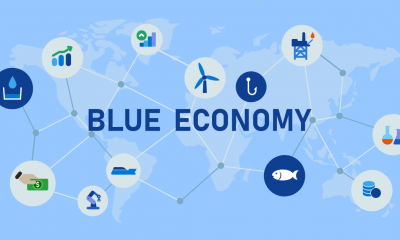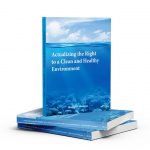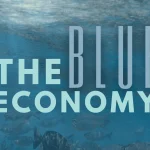By Hon. Prof. Kariuki Muigua, OGW, PhD, C.Arb, FCIArb is a Professor of Environmental Law and Dispute Resolution at the University of Nairobi, Member of Permanent Court of Arbitration, Leading Environmental Law Scholar, Respected Sustainable Development Policy Advisor, Top Natural Resources Lawyer, Highly-Regarded Dispute Resolution Expert and Awardee of the Order of Grand Warrior (OGW) of Kenya by H.E. the President of Republic of Kenya. He is the Academic Champion of ADR 2024, the African ADR Practitioner of the Year 2022, the African Arbitrator of the Year 2022, ADR Practitioner of the Year in Kenya 2021, CIArb (Kenya) Lifetime Achievement Award 2021 and ADR Publisher of the Year 2021 and Author of the Kenya’s First ESG Book: Embracing Environmental Social and Governance (ESG) tenets for Sustainable Development” (Glenwood, Nairobi, July 2023) and Kenya’s First Two Climate Change Law Book: Combating Climate Change for Sustainability (Glenwood, Nairobi, October 2023), Achieving Climate Justice for Development (Glenwood, Nairobi, October 2023) and Promoting Rule of Law for Sustainable Development (Glenwood, Nairobi, January 2024)*
The United Nations 2030 Agenda for Sustainable Development (SDGs) provides in its Preamble that ‘the State Parties were “determined to foster peaceful, just and inclusive societies which are free from fear and violence” as “there can be no sustainable development without peace and no peace without sustainable development”. Some scholars have argued that ‘comparative studies show that development and peacebuilding must be integrated (not just linked) at an early stage – for example by including the political context in development policy and practice in conflict-affected fragile states and by addressing the structural causes of conflict’.
Notably, development and more so, sustainable development, is a multifaceted concept that requires to achieve certain milestones in various sectors, such as social, political, environmental and economic spheres. It is for this reason that ‘the heads of state established five fields of critical importance, or the “five Ps” of the 2030 SDG Agenda, which are people, planet, prosperity, peace and partnerships. Reduction in poverty and concrete improvements in basic education, gender equality, and basic health, all underpinned by improved governance and environmental sustainability are seen as important in building sustainably peaceful and inclusive societies.
It has been argued that development and peacebuilding must be integrated (not just linked) at an early stage – for example by including the political context in development policy and practice in conflict-affected fragile states and by addressing the structural causes of conflict. In addition, it has been acknowledged that strengthening state institutions and enhancing their capacity to provide security and development based on principles of good governance are essential for sound conflict management. In the same way, an effective, credible, and accountable security sector can provide a safe and secure environment in which to entrench other programming initiatives, all embedded in a predictable legal environment supported by culturally appropriate rule of law programs.
In Africa, there have been frequent conflicts across the African continent, which are fueled by various factors, including but not limited to natural resources, fight for political control, poverty, negative ethnicity, religion, environmental causes, and external influence, among others. It is also worth noting that some of the frequent ethnic conflicts have been attributed to the former colonial masters where, colonial authorities drew up local and national territorial boundaries in Africa based on a rather simplistic understanding of the nature of ethnic communities, thus forcing into political entity people who lived apart, separating people who lived together undermining the natural process of state creation and nation building. This has arguably been a major source of conflict among communities in some African countries, such as Nigeria.
The African Union observes that ‘in 2013, during the 50th Anniversary of the OAU/AU, African Heads of State and Government made a Solemn Declaration committing to tackle head-on the scourge of violent conflict in Africa and pronounced their firm determination to achieve the noble goal of a conflict-free Africa, thereby making peace a reality for African people, ridding the continent of wars, violent conflicts, human rights violations, humanitarian crises as well as preventing genocide’. African Union’s Agenda 2063, Africa’s blueprint and master plan for transforming Africa into the global powerhouse of the future, seeks to achieve a peaceful and secure Africa. It is noteworthy that the continent will not make any tangible progress in peacebuilding unless individual states commit to work towards achieving sustainable peace in their territories.
Kenya’s Vision 2030 is grounded on three development pillars namely: economic, social and political pillars. The Social Pillar of the Vision 2030 seeks to invest in the people where it has been pointed out that ‘Kenya’s journey towards widespread prosperity also involves the building of a just and cohesive society that enjoys equitable social development in a clean and secure environment’. Notably, the Political pillar of Vision 2030 also envisions “a democratic political system that is issue based , people-centred, result-oriented and accountable to the public” and ‘a country with a democratic system reflecting the aspirations and expectations of its people, in which equality is entrenched, irrespective of one’s race, ethnicity, religion, gender or socio-economic status; a nation that not only respects but also harnesses the diversity of its people’s values, traditions and aspirations for the benefit of all.’
It is worth pointing out the above inspirations are greatly linked to peacebuilding efforts, as also envisaged under United Nations 2030 Agenda for Sustainable Development (SDGs). SDGs provide that “the new Agenda recognizes the need to build peaceful, just and inclusive societies that provide equal access to justice and that are based on respect for human rights (including the right to development), on effective rule of law and good governance at all levels and on transparent, effective and accountable institutions”. In line with the foregoing, SDG 16 is the substantive goal dedicated to peace and it provides that States should ‘promote peaceful and inclusive societies for sustainable development, provide access to justice for all and build effective, accountable and inclusive institutions at all levels’.
While Kenya’s efforts towards realization of sustainable development Agenda as far as economic development and even some of the social aspirations are concerned are quite commendable, the same cannot be said about the social pillar, and particularly, peacebuilding efforts. For instance, it has been observed that ‘Kenya is a large multi-ethnic country, with over 40 different ethnic groups and many overlapping conflicts which range from high levels of sexual and gender-based violence and of intercommunal violence; low levels of persistent violence; cycles of election-related violence; and increasing numbers of terrorist attacks’. The high levels of violence in Kenya have been attributed to a range of factors including: ethnic intolerance; border conflicts; political party zoning; competition over land and other resources; proliferation of small arms; weak security; and poverty, underdevelopment, and marginalisation.
This is an extract from Kenya’s First ESG Law Book: Embracing Environmental Social and Governance (ESG) tenets for Sustainable Development” (Glenwood, Nairobi, July 2023) by Hon. Prof. Kariuki Muigua, OGW, PhD, Professor of Environmental Law and Dispute Resolution, Senior Advocate of Kenya, Chartered Arbitrator, Kenya’s ADR Practitioner of the Year 2021 (Nairobi Legal Awards), ADR Lifetime Achievement Award 2021 (CIArb Kenya), African Arbitrator of the Year 2022, Africa ADR Practitioner of the Year 2022, Member of National Environment Tribunal (NET) Emeritus (2017 to 2023) and Member of Permanent Court of Arbitration nominated by Republic of Kenya and Academic Champion of ADR 2024. Prof. Kariuki Muigua is a foremost Environmental Law and Natural Resources Lawyer and Scholar, Sustainable Development Advocate and Conflict Management Expert in Kenya. Prof. Kariuki Muigua teaches Environmental Law and Dispute resolution at the University of Nairobi School of Law, The Center for Advanced Studies in Environmental Law and Policy (CASELAP) and Wangari Maathai Institute for Peace and Environmental Studies. He has published numerous books and articles on Environmental Law, Environmental Justice Conflict Management, Alternative Dispute Resolution and Sustainable Development. Prof. Muigua is also a Chartered Arbitrator, an Accredited Mediator, the Managing Partner of Kariuki Muigua & Co. Advocates and Africa Trustee Emeritus of the Chartered Institute of Arbitrators 2019-2022. Prof. Muigua is a 2023 recipient of President of the Republic of Kenya Order of Grand Warrior (OGW) Award for his service to the Nation as a Distinguished Expert, Academic and Scholar in Dispute Resolution and recognized among the top 5 leading lawyers and dispute resolution experts in Band 1 in Kenya by the Chambers Global Guide 2024 and was listed in the Inaugural THE LAWYER AFRICA Litigation Hall of Fame 2023 as one of the Top 50 Most Distinguished Litigation Lawyers in Kenya and the Top Arbitrator in Kenya in 2023.
References
‘Diamonds in Sierra Leone, A Resource Curse?’ available at http://erd.eui.eu/media/wilson.pdf [Accessed on 17/5/2019].
‘Wangari Maathai-an excerpt from the Nobel Peace Prize Winner’s Acceptance Speech,’ Earth Island Journal. Available at http://www.earthisland.org/journal/index.php/eij/article/wangari_maathai_an_excerpt_from _the_nobel_peace_prize_winners_acceptance_sp/ [Accessed on 17/5/2019].
Alao, A., Natural Resource Management and Human Security in Africa, in Abass, A., Protecting Human Security in Africa (ISBN-13: 9780199578986, Oxford University Press, 2010).
Asaduzzaman, Mohammed & Virtanen, Petri, “Governance Theories and Models”, 2016, in A. Farazmand (ed.), Global Encyclopedia of Public Administration, Public Policy, and Governance, DOI 10.1007/978-3-319-31816-5_2612-1.
Ballet, J., et al, ‘Social Capital and Natural Resource Management: A Critical Perspective,’ The Journal of Environment & Development, Vol. 16, No. 4, December 2007, pp. 355-374, p. 367.
Billion, P., Wars of Plunder: Conflicts, Profits and Politics, (New York: Columbia University Press, 2012).
Bollig, M., “Ethnic Conflicts in North-West Kenya: Pokot-Turkana Raiding 1969— 1984.” Zeitschrift Für Ethnologie 115 (1990), pp. 73-90. http://www.jstor.org/stable/25842144. [Accessed on 17/5/2019].
Boyd, D.R., ‘The Effectiveness of Constitutional Environmental Rights,’ Yale UNITAR Workshop, April 26/27, 2013, available at https://environment.yale.edu/content/documents/00003438/Boyd-Effectiveness-ofConstitutional-Environmental-Rights.docx?1389969747 [Accessed on 23/07/2016].
Cosens, B.A., Craig, R.K., Hirsch, S.L., Arnold, C.A.T., Benson, M.H., DeCaro, D.A., Garmestani, A.S., Gosnell, H., Ruhl, J.B. and Schlager, E., “The role of law in adaptive governance,” Ecology and society: a journal of integrative science for resilience and sustainability 22, no. 1 (2017): 1, p.1.
Daly, E. & May, J.R., ‘Comparative environmental constitutionalism,’ Jindal Global Law Review, April 2015, Volume 6, Issue 1, pp 9–30.
Free the Slaves, ‘Congo’s Mining Slaves: Enslavement at South Kivu Mining Sites,’ Investigative Field Report, June 2013. Available at https://www.freetheslaves.net/wp-content/uploads/2015/03/Congos Mining-Slaves-web-130622.pdf [Accessed on 17/5/2019].
Galtung, J., “Violence, peace, and peace research,” Journal of peace research, Vol. 6, no. 3 (1969): 167-191.
Herath, O., “A critical analysis of Positive and Negative Peace,” (2016), p.106. Available at http://repository.kln.ac.lk/bitstream/handle/123456789/12056/journal1%20%281%29.104- 107.pdf?sequence=1&isAllowed=y [Accessed on 16/5/2019].
Homer-Dixon, T.F., “Environmental scarcities and violent conflict: evidence from cases,” International security 19, No. 1 (1994): 5-40 at p. 6.
IDLO, “Sustaining Peace, Building Justice: Discussion Note,” available at https://www.idlo.int/system/files/event-documents/IDLO%20IN%20- %20Sustaining%20Peace-Building%20Justice%20NO%20CONTACTS.PDF [ Accessed on 17/5/2019].
Institute for Economics and Peace, ‘Pillars of Peace: Understanding the key attitudes and institutions that underpin peaceful societies,’ IEP Report 22, p. 5. Available at https://www.files.ethz.ch/isn/169569/Pillars%20of%20Peace%20Report%20IEP.pdf.
International Alert, “What is Peace Building?” Available at https://www.internationalalert.org/what-we-do/what-is-peacebuilding [17/5/2019].
International Alert, “What is Peace Building?” Available at https://www.internationalalert.org/what-we-do/what-is-peacebuilding [17/5/2019].
International Alert, “What is Peace Building?” Available at https://www.internationalalert.org/what-we-do/what-is-peacebuilding [17/5/2019].
IUCN Resolution 3.012 on Governance of natural resources for conservation and sustainable development adopted in Bangkok, Thailand in 2004. Available at https://portals.iucn.org/library/sites/library/files/resrecfiles/WCC_2004_RES_12_EN.pdf [Accessed on 16/5/2019].
IUCN, Environmental Law: Governance and MEAs, available at https://www.iucn.org/theme/environmental-law/our-work/governance-and-meas [Accessed on 16/5/2019].
Johannes, E.M., et al, ‘Oil discovery in Turkana County, Kenya: a source of conflict or development?’ African Geographical Review, Vol. 34, No.2, 2015, pp.142-164, p. 142.
Kinniburgh, C., ‘Beyond “Conflict Minerals”: The Congo’s Resource Curse Lives On,’ Dissent Magazine, Spring 2014, available at https://www.dissentmagazine.org/article/beyond-conflict-minerals-thecongos-resource-curse-lives-on [ Accessed on 12/08/2018].
Lawson, T. R. & Greestein, J., ‘Beating the resource Curse in Africa: A global Effort,’ Africa in Fact, August 2012. Available at http://www.cfr.org/africa-subsaharan/beating-resource-curse-africa-global-effort/p28780 [Accessed on 17/5/2019].
Lohde, L.A., The Art and Science of Benefit Sharing in the Natural Resource Sector, (International Finance Corporation, February 2015), p. 55. Available at https://commdev.org/wpcontent/ uploads/2015/07/IFC-Art-and-Science-of-Benefits-Sharing-Final.pdf.
Maiese, M., ‘Social Structural Change,’ in G. Burgess & H. Burgess (eds), Beyond Intractability, (Conflict Information Consortium, University of Colorado, Boulder, July 2003), available at http://www.beyondintractability.org/essay/social-structural-changes [Accessed on 17/05/2019];
Maphosa, S.B., Natural Resources and Conflict: Unlocking the Economic dimension of peace-building in Africa. ASIA Policy brief Number 74, 2012.
Martin, P., Boer, B. and Slobodian, L., (Eds.), Framework for Assessing and Improving Law for SustainabilityIUCN, Gland, Switzerland, 2016, xii + 126 pp at p. 1. Available at https://www.iucn.org/sites/dev/files/framework_for_assessing_and_improving_law_for_susta inability.pdf [Accessed on 16/5/2019].
Martin, P., Boer, B. and Slobodian, L., (Eds.), Framework for Assessing and Improving Law for Sustainability IUCN, Gland, Switzerland, 2016, at p. 1.
Martin, P., Boer, B. and Slobodian, L., (Eds.), Framework for Assessing and Improving Law for SustainabilityIUCN, Gland, Switzerland, 2016, at p. 3.
Martin, P., Boer, B. and Slobodian, L., (Eds.), Framework for Assessing and Improving Law for SustainabilityIUCN, Gland, Switzerland, 2016, at p.ix.
Moore, P., et al, Natural Resource Governance Trainers’ Manual, (IUCN, RECOFTC, SNV, Bangkok, Thailand, 2011), p. 119.
Muigua, K., Kariuki, F., Wamukoya, D., Natural Resources and Environmental Justice in Kenya, Glenwood Publishers, Nairobi, 2015.
Muigua, K., Kariuki, F., Wamukoya, D., Natural Resources and Environmental Justice in Kenya, Glenwood Publishers, Nairobi, 2015.
Muigua, K., Kariuki, F., Wamukoya, D., Natural Resources and Environmental Justice in Kenya, Glenwood Publishers, Nairobi, 2015. 61 United Nations, The Sustainable Development Goals Report, 2018, p.15. Available at https://unstats.un.org/sdgs/files/report/2018/TheSustainableDevelopmentGoalsReport 2018- EN.pdf [Accessed on 17/5/2019].
Mwenda, A. & Kibutu, T.N., ‘Implications of the New Constitution on Environmental Management in Kenya,’ Law, Environment and Development Journal, Vol. 8, No. 1, 2012, p. 78.
Nafees, A., “The Role of Civil Society Institutions in Environmental Governance in India: Post-colonial Context and Human Rights Challenges in the Environmental Justice,” International Journal of Legal Studies and Research, Special Issue-June 2018, pp. 16-39, at p. 16.
Okidi. C.O., “Concept, Function and Structure of Environmental Law”, in C.O Okidi, P. Kameri -Mbote and Migai Aketch (eds.), Environmental Governance in Kenya; Implementing the Framework Law, (East African Educational Publishers, 2008), pp. 142–182: 146.
Peace Building Initiative, “Introduction: Justice, Rule of Law & Peacebuilding Processes, 2009” available at http://www.peacebuildinginitiative.org/indexe33f.html?pageId=1844 [Accessed on 17/5/2019].
Saboe, N.T., ‘Benefit Sharing Among Local Resource Users: The Role of Property Rights,’ World Development, Vol. 72, pp. 408–418, 2015, p. 408.
Samndong, R.A. & Nhantumbo, I., Natural resources governance in the Democratic Republic of Congo: Breaking sector walls for sustainable land use investments, (International Institute for Environment and Development Country Report, February 2015), p. 11. Available at http://pubs.iied.org/pdfs/13578IIED. pdf [Accessed on 17/5/2019].
Sigam, C. & Garcia, L., Extractive Industries: Optimizing Value Retention in Host Countries, (UNCTAD, 2012). Available at http://unctadxiii.org/en/SessionDocument/suc2012d1_en.pdf [Accessed on 12/08/2018].
Spring, Ú.O., “Peace and Environment: Towards a Sustainable Peace as Seen from the South.” In Globalization and Environmental Challenges, Springer, Berlin, Heidelberg, 2008, pp. 113-126.
Tsani, S., Natural resources, governance and institutional quality: The role of resource funds,’ Resources Policy, 38(2013), pp.181–195, p. 184.
Turkana County –United Nations Joint Programme 2015-2018, (Executive Office, Turkana County Government, Lodwar, Turkana UN Resident Coordinator Office, Nairobi, Kenya), p. 4. Available at https://info.undp.org/docs/pdc/Documents/KEN/ProDoc%20TurkanaUN%20Joint%20Programme%20final%205th%20%20March%202015- binder%20%282%29.pdf [Accessed on 17/5/2019].
UN General Assembly, Transforming our world: the 2030 Agenda for Sustainable Development, 21 October 2015, A/RES/70/1.
United Nations Conference on Environment & Development Rio de Janeiro, Brazil, 3 to 14 June 1992.
United Nations Development Programme, Local Governance In Fragile And ConflictAffected Settings: Building A Resilient Foundation For Peace And Development, A UNDP how-to guide, 2016.
United States Institute of Peace, Natural Resources, Conflict, and Conflict Resolution, A Study Guide Series on Peace and Conflict for Independent Learners and Classroom Instructors, 2007, p.8.
United States Institute of Peace, Natural Resources, Conflict, and Conflict Resolution, A Study Guide Series on Peace and Conflict for Independent Learners and Classroom Instructors, 2007, p.8. 48 Alstine, J.V., et al, Resource Governance Dynamics: The Challenge of ‘New Oil’ In Uganda, Resources Policy, Vol. 40, 2014, pp.48–58.
Wiebelt, M., et al, ‘Managing Future Oil Revenues in Uganda for Agricultural Development and Poverty Reduction: A CGE Analysis of Challenges and Options,’ (Kiel Working Paper No. 1696, May 2011). Available at https://www.ifw-members.ifw-kiel.de/publications/managing-future-oil-revenues-in-ugandafor-agricultural-development-and-poverty-reduction-a-cge-analysis-of-challenges-andoptions/kap-1696.pdf [Accessed on 17/5/2019].

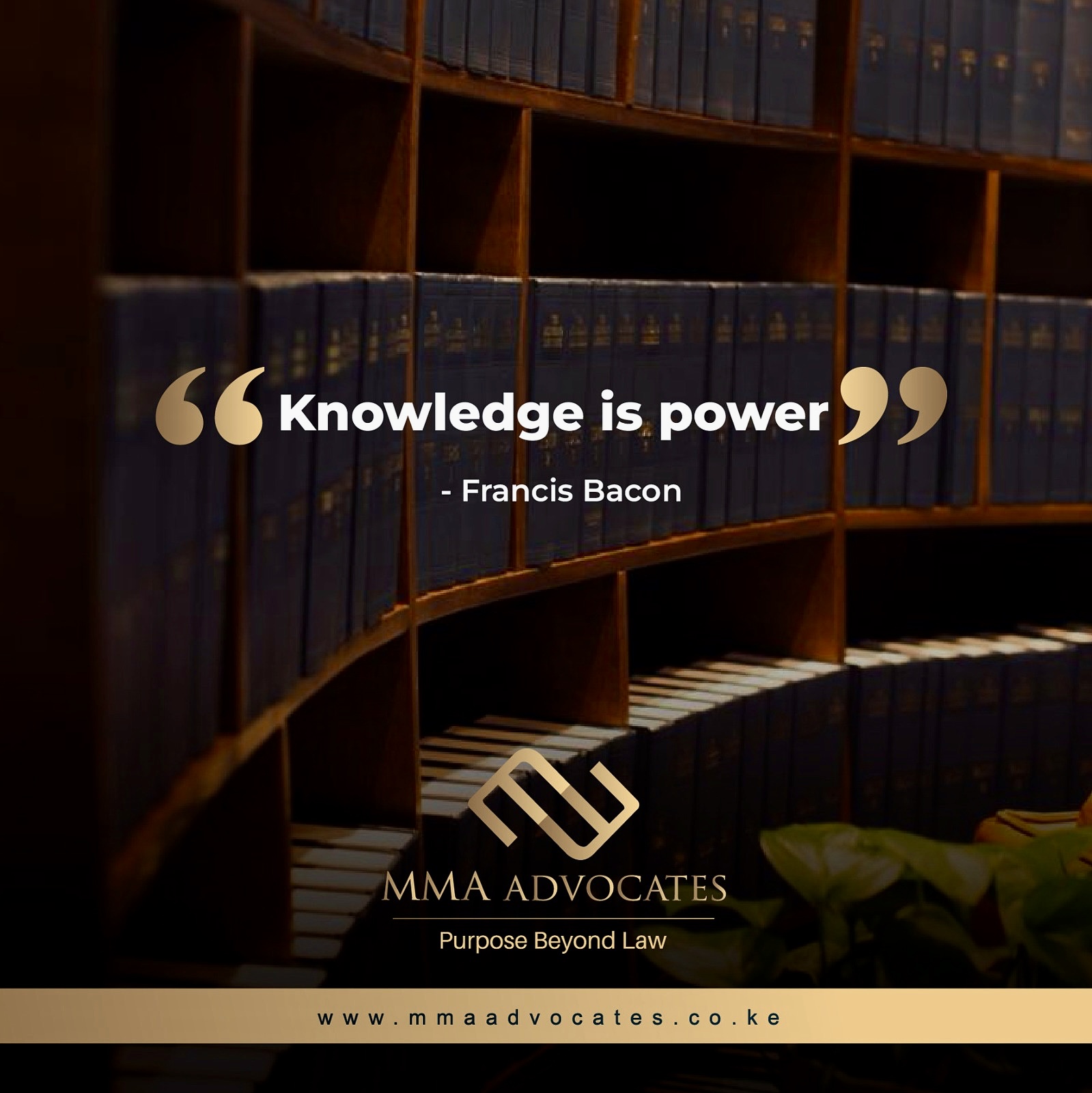



 Lawyers2 years ago
Lawyers2 years ago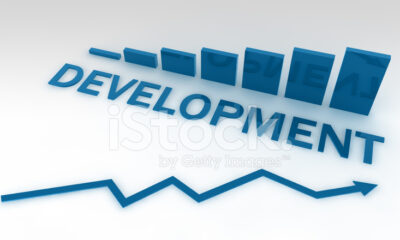
 News & Analysis3 years ago
News & Analysis3 years ago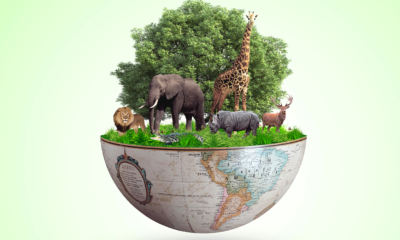
 News & Analysis3 years ago
News & Analysis3 years ago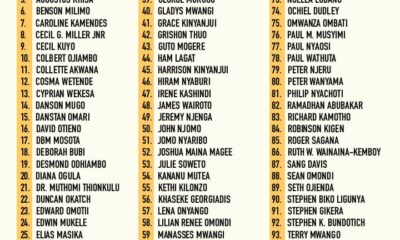
 Lawyers2 years ago
Lawyers2 years ago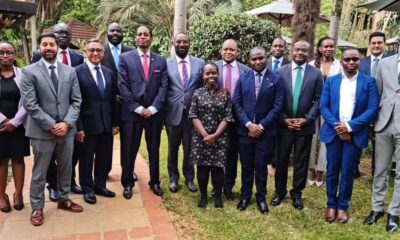
 News & Analysis2 years ago
News & Analysis2 years ago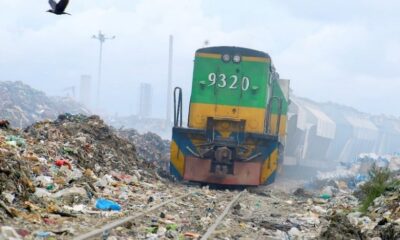
 News & Analysis1 year ago
News & Analysis1 year ago
 News & Analysis3 years ago
News & Analysis3 years ago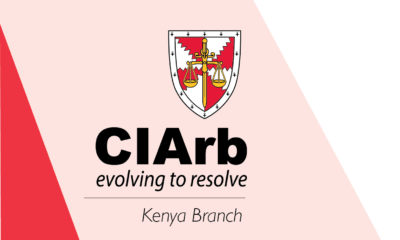
 News & Analysis1 year ago
News & Analysis1 year ago













